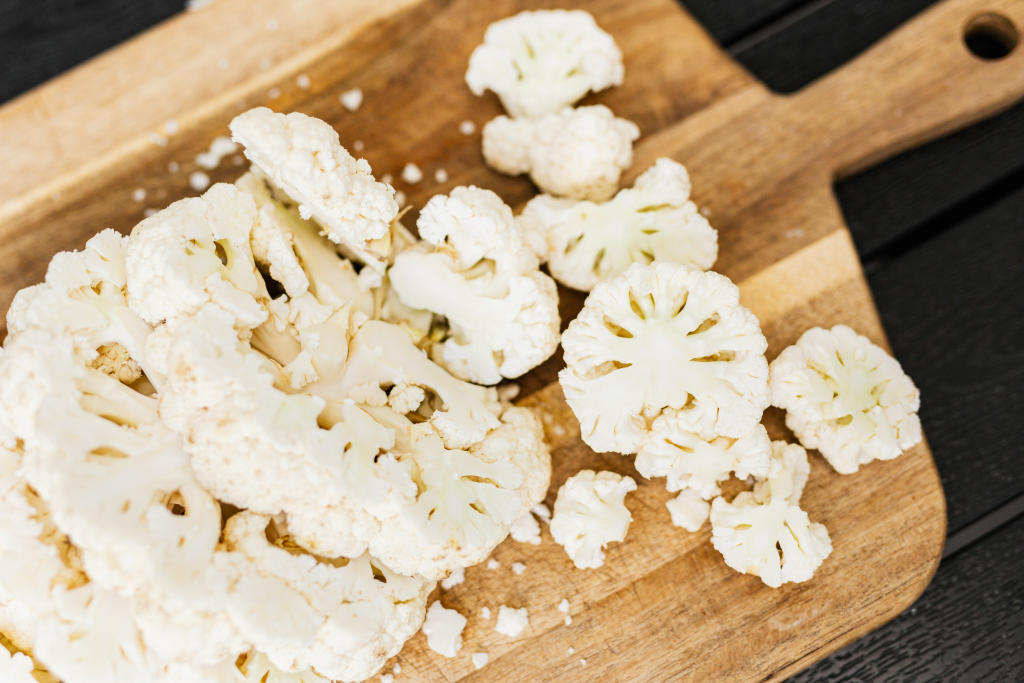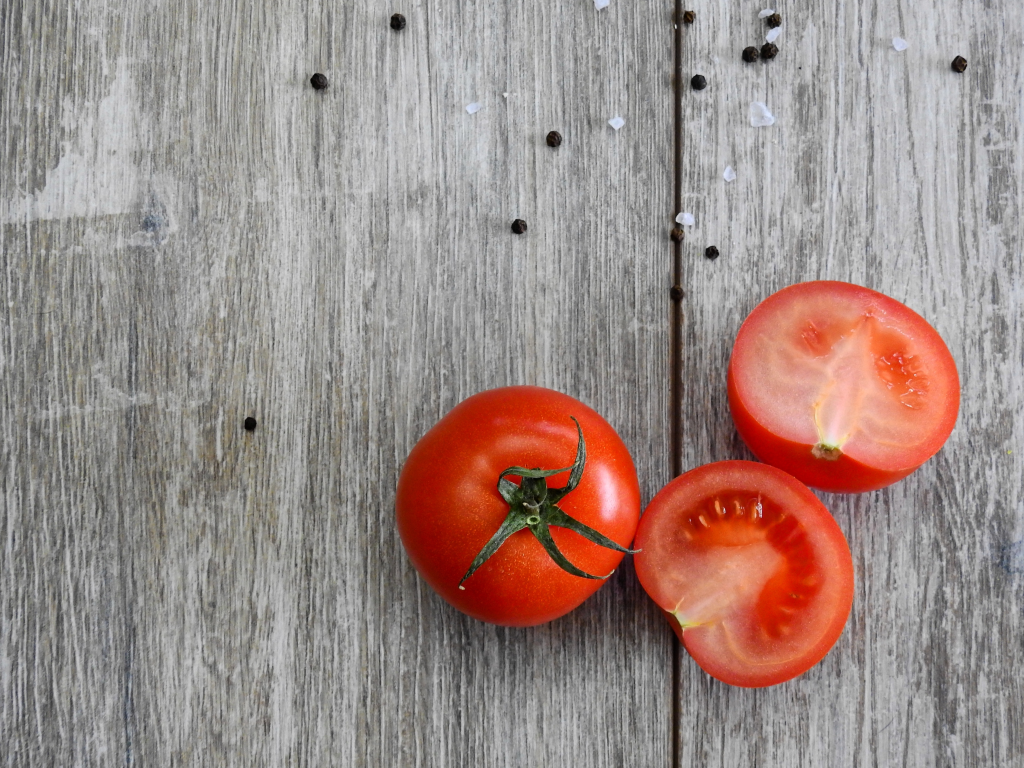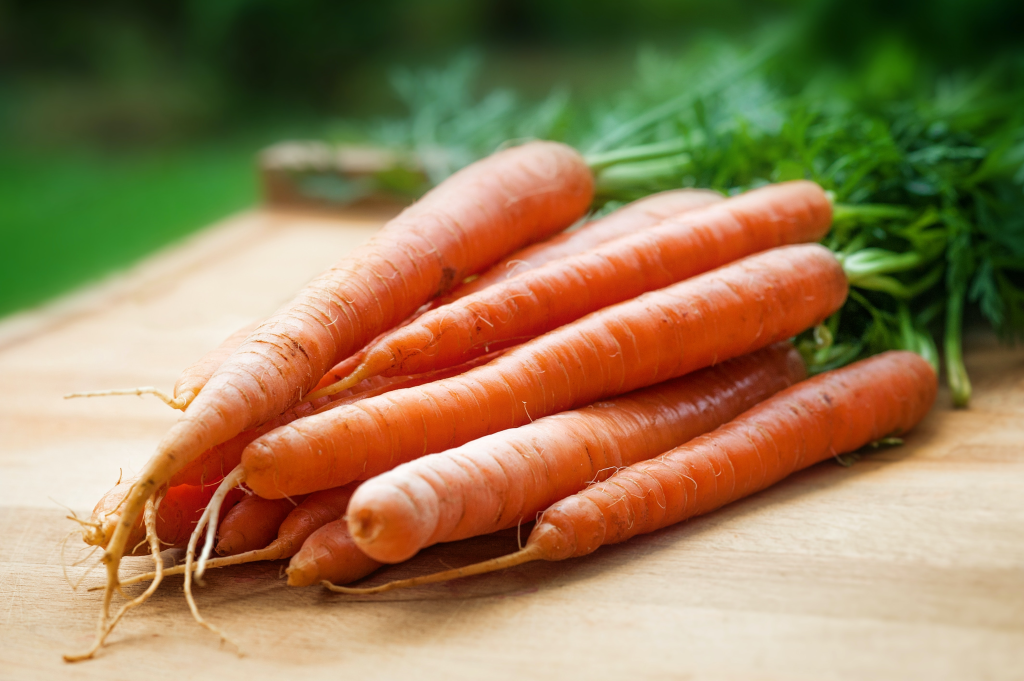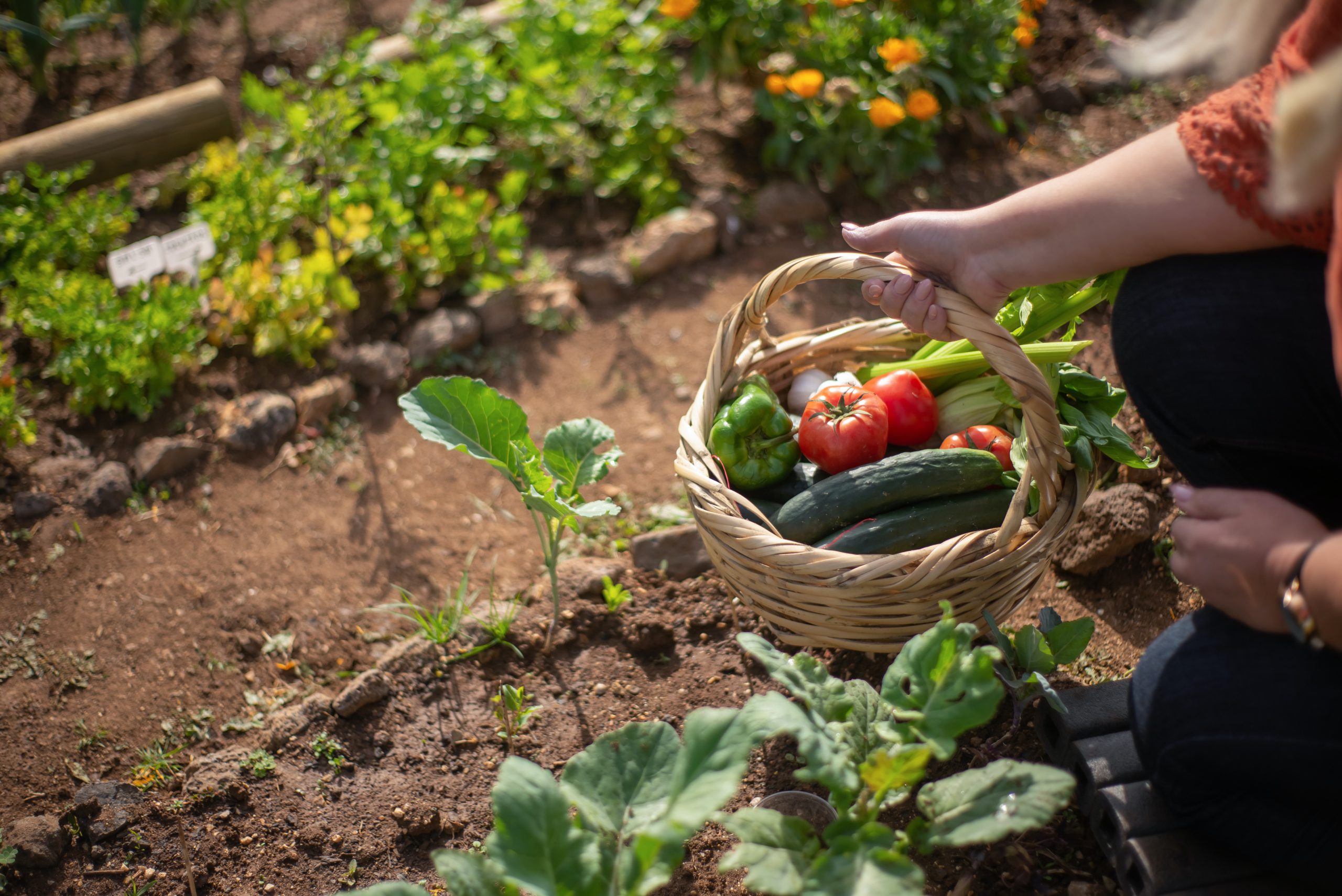Now that spring is in full swing, it’s time to look forward to summer vegetables grown in the Netherlands. Discover the 5 most delicious and healthiest summer vegetables; how they thrive in your garden, on your plate, and in your body.
Cauliflower is a fantastic summer vegetable full of vitamins
Cauliflower belongs to the cruciferous family, just like broccoli, radishes, and arugula, for example. Its botanical name is Brassica oleracea convar. Botrytis var. Botrytis. The white “florets” that we typically eat from cauliflower are actually undeveloped flower buds. The classic cauliflower has whitish florets, but there are also orange, purple, and green varieties.

Cauliflower in your garden
Cauliflower can be cultivated in various ways and harvested at different times. If you want to grow cauliflower in your garden, summer cultivation is a good option. With a bit of luck and skill, you can harvest cauliflower between June and August. Cauliflower is said to be not the easiest summer vegetable to grow on your own, so you can also buy them fresh or frozen. Cauliflower doesn’t stay good for very long, but it does remain preserved in the freezer, and even in this form, you can still benefit from the healthy nutrients it contains.
Cauliflower on your plate
Cauliflower used to have a less favorable reputation, perhaps because we used to boil it into mush, often with a sprinkling of nutmeg. Lately, cauliflower has become a bit hip again, and rightly so. Thanks to its firm texture and neutral taste, cauliflower is suitable for many different dishes. Eat it boiled or steamed in a traditional Dutch way with potatoes, or turn it into a delicious curry with coconut milk and cardamom, for example. Want to eat fewer carbohydrates? Grate the firm stem into “cauliflower rice.” Cauliflower is also popular nowadays as a gluten-free alternative for pizza crust. You can also roast cauliflower slices in the oven with a little oil and optionally some seasonings, such as herbs and spices. Finally, cauliflower is also a wonderful base for a creamy soup.
Cauliflower for your health
Cauliflower contains a variety of vitamins and minerals but is especially rich in vitamin C. It is also a source of vitamin K and vitamin B11, which can be divided into folate and folic acid. Vitamin C supports your health in many different ways and is important for your blood vessels, skeleton, and cartilage formation. Vitamin C is also important for maintaining healthy skin, as an antioxidant it contributes to the protection of your cells against oxidative damage. Vitamin K contributes to maintaining strong bones and supports blood clotting. Folate supports your immune system, contributes to extra energy when fatigued, and is good for your mood.
Tomato is a summer vegetable full of antioxidants
Tomato is the quintessential summer vegetable, botanically speaking, it is actually considered a fruit. This is because it contains seeds and grows on a plant (Solanum lycopersicum) that flowers. This plant belongs to the nightshade family, just like potatoes and eggplants, for example. The plant itself is quite toxic, but the fruits are very healthy, although some people may be sensitive to them.

Tomatoes in your garden
Tomatoes are often seen in greenhouses, but with some help, they can also be grown in your garden. You usually have to start by sowing the seeds in pots, around March, allowing them to germinate indoors, and then transplanting the seedlings outside in larger pots or directly in the ground from around mid-May. Tomatoes need plenty of light and fertile soil. They can also be susceptible to diseases. They are.
Tomatoes on your plate
We probably don’t need to tell you much about tomatoes. This beautiful red fruit/summer vegetable has countless uses and appears in various cuisines. In summer, it shines in a delicious gazpacho or a colorful salad, for example. As a sauce or cut into pieces, it’s perfect for pizza, pasta, and curries, but it also works well in moussaka or shakshuka, for instance. Finally, tomato juice is a delightful and healthy beverage on a summer day.
Tomato for your health
Tomato is a good source of the antioxidant vitamin C and is also rich in the antioxidant copper. Both of these nutrients help protect your cells against oxidative damage. They also have a positive impact on the immune system in general and support energy levels. Both antioxidants are important for maintaining healthy skin. Copper helps keep the skin’s connective tissue supple, while vitamin C contributes to collagen formation, which helps strengthen the skin from within. Additionally, copper contributes to normal hair pigmentation.
Fennel is healthy and low in calories
Fennel (Foeniculum vulgare) belongs to the umbelliferous family and comes in two types: leaf fennel and bulb fennel. Fennel originally comes from the Mediterranean region. We eat the bulb of bulb fennel (Foeniculum vulgare Azoricum group) as a vegetable, and we use the leaves as an herb and the seeds as a spice. The different parts of fennel have a sweet, anise-like taste. Fennel seeds are used for various medicinal purposes as part of alternative medicine.
Fennel in your garden
Fennel thrives in Dutch gardens. You can sow fennel in spring and harvest it in summer, or sow it in summer and harvest it in autumn. You can sow fennel directly in the ground in a vegetable garden, but you can also use pots or containers (on a balcony, for example). These should be fairly large and provide enough space for the fennel to grow upwards as well. Typically, you can harvest the bulbs when they are about 10 centimeters in size. Cut them a bit above the bulb. They will only stay fresh for a few days, so consume them quickly! By the way, the leaves are also edible.
Fennel on your plate
Fennel is a delightful aromatic vegetable that can be prepared in various ways. The bulbs work great in a casserole with, for example, goat cheese. Roasting is also a suitable method for fennel. But fennel is also delicious and healthy when eaten raw. Soften it by soaking it in olive oil and lemon, for example. Finely slice or grate it to incorporate into a salad, perhaps together with carrots. The leaves can be added as well or enjoyed in a jug of water or tea.
Fennel for your health
Fennel contains various nutrients that support your health. For example, fennel is a source of iron and vitamin B1 (thiamine). Both of these play a role in your energy metabolism. They help release energy from fat, carbohydrates, and proteins. Iron is beneficial for combating fatigue and contributes to maintaining a clear mind. Vitamin B1 is favorable for a good mental balance and helps ensure the proper functioning of the nervous system. The great thing about fennel is that it is low in calories. With 100 grams of fennel, you consume only 40 kilocalories. So there’s every reason to include fennel more often in your meals!
Carrots are healthy summer vegetables full of vitamin A
Carrots are versatile vegetables that can be harvested in different seasons, depending on the variety. The thinner, orange carrot that can be harvested in summer is a descendant of the white, wild carrot (Daucus carota) and belongs to the umbelliferous family. White carrots still exist, by the way. Carrots are also increasingly available in colors like yellow and purple.

Carrots in your garden
Carrots are grown on a large scale in the Netherlands, both in the agricultural sector and in private vegetable gardens. You can grow carrots in the ground, but also in containers in your garden or even on your balcony. If you sow them early in the year, for example in January, they may flower in the same year. If you take good care of them and ensure that your plants have enough space, you may be able to enjoy your homegrown carrots in the same year! Fun fact: the green foliage of your carrots is also edible! It is a good source of vitamins and minerals, such as vitamin K, and delicious in soups or pesto, for example.
Carrots on your plate
There are countless ways to enjoy carrots. They can be eaten raw as a healthy snack with yogurt dip, boiled whole or chopped into soups and sauces. Due to their sweet undertone, carrots can also be used to make cookies and cakes. Who can resist a delicious carrot cake with nuts? Let’s not forget carrot juice, which is also an excellent way to enjoy the health benefits of carrots!
Carrots for your health
The colors of vegetables and fruits are also associated with the nutrients they contain. For now, let’s focus on orange carrots and carrots. The orange color of carrots is caused by carotenoids, particularly beta-carotene. Beta-carotene can be converted into vitamin A in your body and support your health in various ways. Vitamin A is good for your vision. This vitamin helps you maintain normal vision in the dark and supports the condition of your eyes. Additionally, vitamin A helps keep your skin healthy by supporting its regenerative ability. Furthermore, vitamin A contributes to maintaining a good iron level in the blood.
Zucchini is a source of vitamin C and iron
Zucchini adorns many vegetable gardens in summer. Zucchini is easy to grow and is best cultivated in Dutch soil in June, July, August, and September. This summer vegetable belongs to the Cucurbitaceae family and is considered a fruit in botanical circles, just like tomatoes and cucumbers. It may not surprise you that zucchini is related to cucumbers, but did you know that melons and pumpkins are also related to zucchini? In the round zucchini, which has become increasingly popular in recent years, you can see this resemblance more clearly.
Zucchini in your garden
A mature zucchini plant has large, green leaves and striking yellow flowers. These flowers are also edible and ideal for brightening up your salads, for example! If you have ever had zucchini in your vegetable garden, you know that it can grow quite large, much larger than what you usually find in the supermarket. However, if you have ever taken a bite of a zucchini the size of a baseball bat, you know that it has little flavor. That’s why zucchini is usually harvested before it is fully grown.
Zucchini on your plate
Even with a smaller zucchini, the flavor remains quite neutral and subtle, making this summer vegetable incredibly easy to combine. You’ll find it in a variety of dishes, from Italian to Middle Eastern or Asian cuisine. Stir-frying is often a great way to prepare zucchini. People who enjoy raw food also use the versatile zucchini as an alternative to pasta. Try finely slicing or grating it, adding some lemon juice, salt, and olive oil, and discover how delicious it can be. Thin slices of zucchini also work wonderfully as a replacement for lasagna noodles. Give it a try!
Zucchini for your health
If the taste and versatility of zucchini aren’t reason enough to include this summer vegetable regularly on your table, then perhaps its nutritional value will be the deciding factor. Zucchini is rich in iron and is also a source of vitamin C. With 100 grams of zucchini, you get over 30% of the recommended daily amount of iron and 20% of your recommended daily amount of vitamin C. The interesting thing is that vitamin C enhances the absorption of iron from food.
Try these delicious summer vegetables in a juice or soup!
If the weather is beautiful outside and you don’t feel like spending a long time in the kitchen, but still want to enjoy the delightful flavors and health benefits of these 5 summer vegetables, try them in the form of a juice or soup. Cauliflower may not be suitable for juicing, but it works excellently as a base for a creamy soup! You can enrich its neutral taste with fresh herbs and spices. Don’t have time to make cauliflower soup yourself? Then order our delicious homemade cauliflower soup! Tomato is featured in our Power juice, as well as in our tomato soup and bell pepper soup. Fennel shines in juices like Fuel, Hydrate, and Boost. Carrot is found in the Fresh and Sunny juices, as well as in our healthy pumpkin soup, for example. Zucchini doesn’t juice quite as well, but it’s a perfect base ingredient for a light green soup! Give our homemade zucchini soup a try! Both our juices and soups are frozen immediately after preparation. You just need to thaw them to enjoy a super healthy juice or soup that tastes wonderfully fresh. Bring on the summer!
Sources
Netherlands Nutrient Database (NEVO)
Inspection Council
Wikipedia

